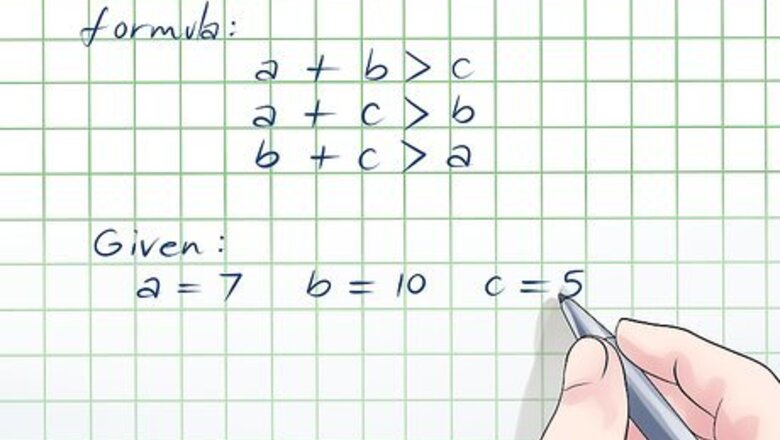
views
X
Research source
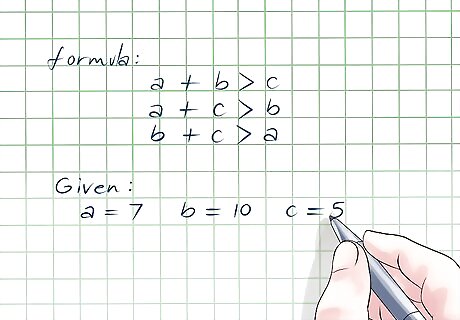
Learn the Triangle Inequality Theorem. This theorem simply states that the sum of two sides of a triangle must be greater than the third side. If this is true for all three combinations, then you will have a valid triangle. You'll have to go through these combinations one by one to make sure that the triangle is possible. You can also think of the triangle as having the side lengths a, b, and c and the theorem being an inequality, which states: a+b > c, a+c > b, and b+c > a. For this example, a = 7, b = 10, and c = 5.
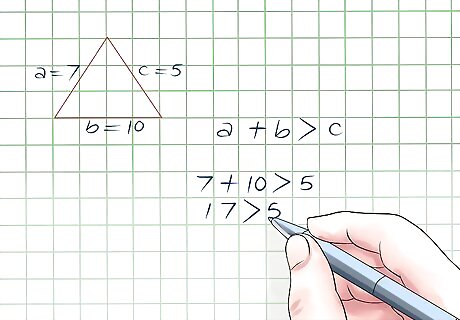
Check to see if the sum of the first two sides is greater than the third. In this case, you can add the sides a and b, or 7 + 10, to get 17, which is greater than 5. You can also think of it as 17 > 5.
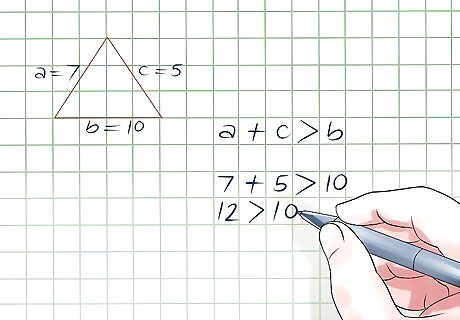
Check to see if the sum of the next combination of two sides is greater than the remaining side. Now, just see if the sum of sides a and c are greater than the side b. This means you should see if 7 + 5, or 12, is greater than 10. 12 > 10, so it is.
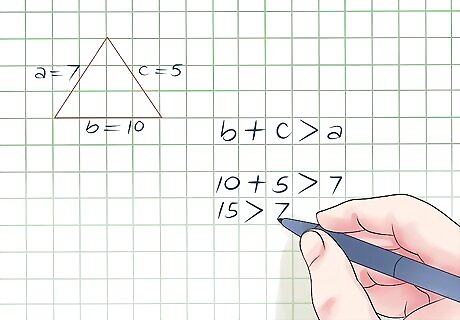
Check to see if the sum of the last combination of two sides is greater than the remaining side. You need to see if the sum of side b and side c is greater than side a. To do this, you'll need to see if 10 + 5 is greater than 7. 10 + 5 = 15, and 15 > 7, so the triangle passes on all sides.
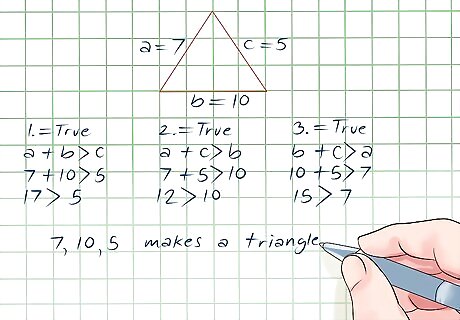
Check your work. Now that you've checked the side combinations one by one, you can double check that the rule is true for all three combinations. If the sum of any two side lengths is greater than the third in every combination, as it is for this triangle, then you've determined that the triangle is valid. If the rule is invalid for even just one combination, then the triangle is invalid. Since the following statements are true, you've found a valid triangle: a + b > c = 17 > 5 a + c > b = 12 > 10 b + c > a = 15 > 7
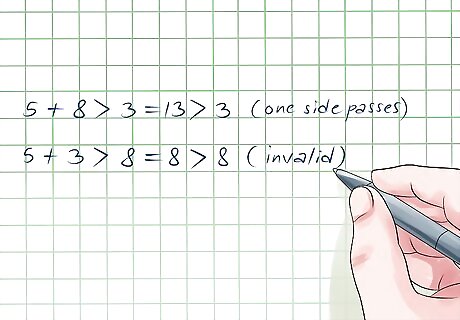
Know how to spot an invalid triangle. Just for practice, you should make sure you can spot a triangle that doesn't work as well. Let's say you're working with these three side lengths: 5, 8, and 3. Let's see if it passes the test: 5 + 8 > 3 = 13 > 3, so one side passes. 5 + 3 > 8 = 8 > 8. Since this is invalid, you can stop right here. This triangle is not valid.















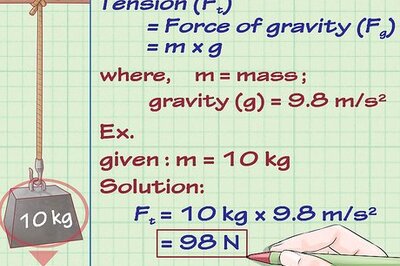

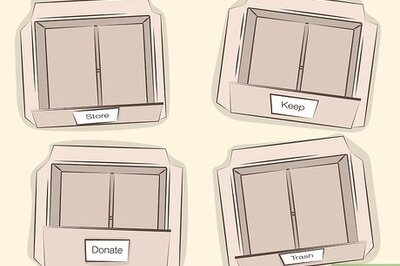

Comments
0 comment